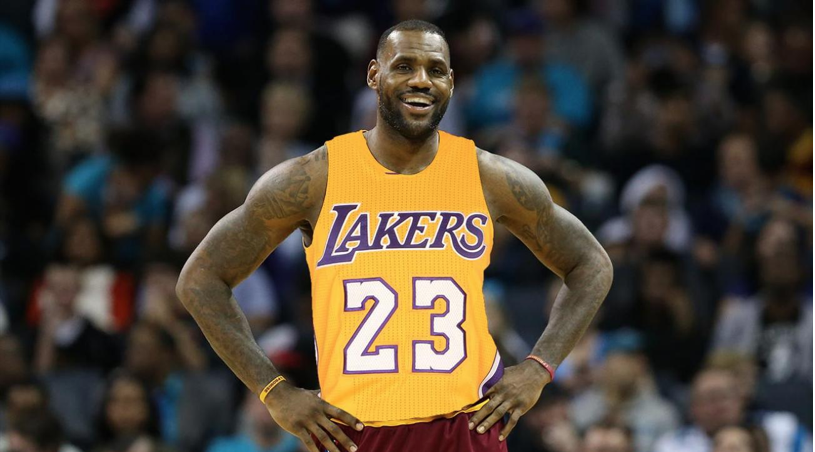CommentsNEW GEOGRAPHY--With his decision to move to Los Angeles, LeBron James has given our metropolis another reason to feel good about itself.
When it comes to sports, and celebrity, Los Angeles’ lead is only growing, as evidenced by the recent movement of two football teams to the area, the proposed construction of a new basketball facility for the Clippers and the winning of the 2028 Olympics games.
Los Angeles is clearly winning the battle for sports screen time. In choosing Southern California, James effectively dissed Cleveland, no great rival, but also wannabe Houston, which he apparently has no fondness for, as well as Philadelphia and Boston, two attractive traditional basketball junkie centers. The fact that New York, America’s other megacity, was not even in the discussion might constitute the sweetest message of all.
But what does this mean overall, besides providing photo-ops for an Eric Garcetti presidential bid, for the vast majority of Angelenos? Probably not much. Although, we may get to enjoy some basketball before the inevitable hammering from the increasingly invincible Golden State Warriors.
Understanding our assets
LeBron’s decision reflects the two great strengths of Southern California — its Hollywood/celebrity culture and its best on the planet weather. These attract the rich and famous, as has been the case for generations.
But how much does this extend to the rest of us? When Hollywood was at its peak in the 1930s and 1940s, Southern California was a dream factory not just for films and music, but for ordinary people. Defense industries made it, by some calculations, the largest center for scientists and engineers on the planet, and a booming population drove a large, homegrown industry of architects, developers, master planners, household fixture and car manufacturers.
Today, even though the insipid celebrity culture thrives, the other pillars of the region are stagnant or declining. Manufacturing jobs continue to decline, 89,000 since 2007, even amidst a national surge. Homebuilding remains focused largely on high-end unaffordable multi-family housing. More middle-range, family friendly housing is increasingly out of reach for the vast majority. Incomes have continued to drop relative to rent, and conditions in South Central Los Angeles, home to the 1992 riots, are, if anything, worse.
What has changed since Wilt and Magic?
Even when Wilt Chamberlain and Magic Johnson powered our basketball culture, Los Angeles was still a magnet for both foreign immigrants and domestic migrants. Today, instead of attracting masses of people, Los Angeles is expelling them at the fourth highest rate among the country’s 53 big metros. The transfer of people to Nevada’s Clark County from Los Angeles, according to one recent survey, is now the largest county-to-county movement across state lines in the nation.
Like Los Angeles, Las Vegas is a city of glitz, but there, at least, living near stars does not mean astronomic costs. Los Angeles continues to be a beacon for the wealthy but is losing its broad demographic appeal to other, less naturally favorable, environments like Austin, Orlando and Nashville. Each of these have their own glitz, but, like Vegas, the price you pay is much less.
More important still, these Los Angeles wannabes are expanding their economic toolkit. Each is expanding their tech economy radically while Southern California’s intermittently stagnates or contracts. Other cities, like Dallas-Ft. Worth, are becoming corporate and financial behemoths while the arch-rival, the Bay Area, walks off with virtually all of California’s new high-wage jobs.
A mission for a king?
When LeBron first left Cleveland, it was a hard blow against a scrappy, still struggling city. Now that he has left it again, it remains, perhaps slightly less challenged in terms of image, among the weaker economies in the nation.
Los Angeles may not be as needy as Cleveland, but desperately needs something other than a celebrity boost. Our region is rapidly becoming feudalized between rich and poor. If you go to supposedly “gentrifying” areas like Koreatown, you see luxury high-rises, mostly for foreigners, next to decrepit older office buildings, struggling working-class families and a huge homeless encampment. Similar, if not quite as jarring, disparities are evident across the region, even in Orange County.
LeBron may see Los Angeles in its most glittering light, but he should also realize that the young and minorities, as a recent UCLA study reveals, are increasingly alienated and dispirited about rising rents, modest opportunities and impossible house prices. We need stars to promote better options to our youths beyond celebration of athletic greatness.
Like so many of Los Angeles’ creators — the Chandlers, the Ahmansons and Eli Broad — LeBron hails from the Midwest, a place that celebrates hard work and loyalty to the community. His boss, and fellow Midwesterner, Magic Johnson, played a prominent role in the rebuilding after the 1992 riots. Schooled in hard winters and bleak landscapes, refugees from the heartland often appreciate Southern California more than many long-term residents.
Los Angeles needs a king who can not only dribble and shoot, but also push his shoulder to the wheel to restore hope to the next generation. If LeBron can commit to that, I won’t resent not being able to afford Lakers tickets this fall.
(Joel Kotkin is the R.C. Hobbs Presidential Fellow in Urban Futures at Chapman University in Orange and executive director of the Houston-based Center for Opportunity Urbanism. He is an occasional contributor to CityWatch.) This piece first appeared in New Geography.
-cw
















